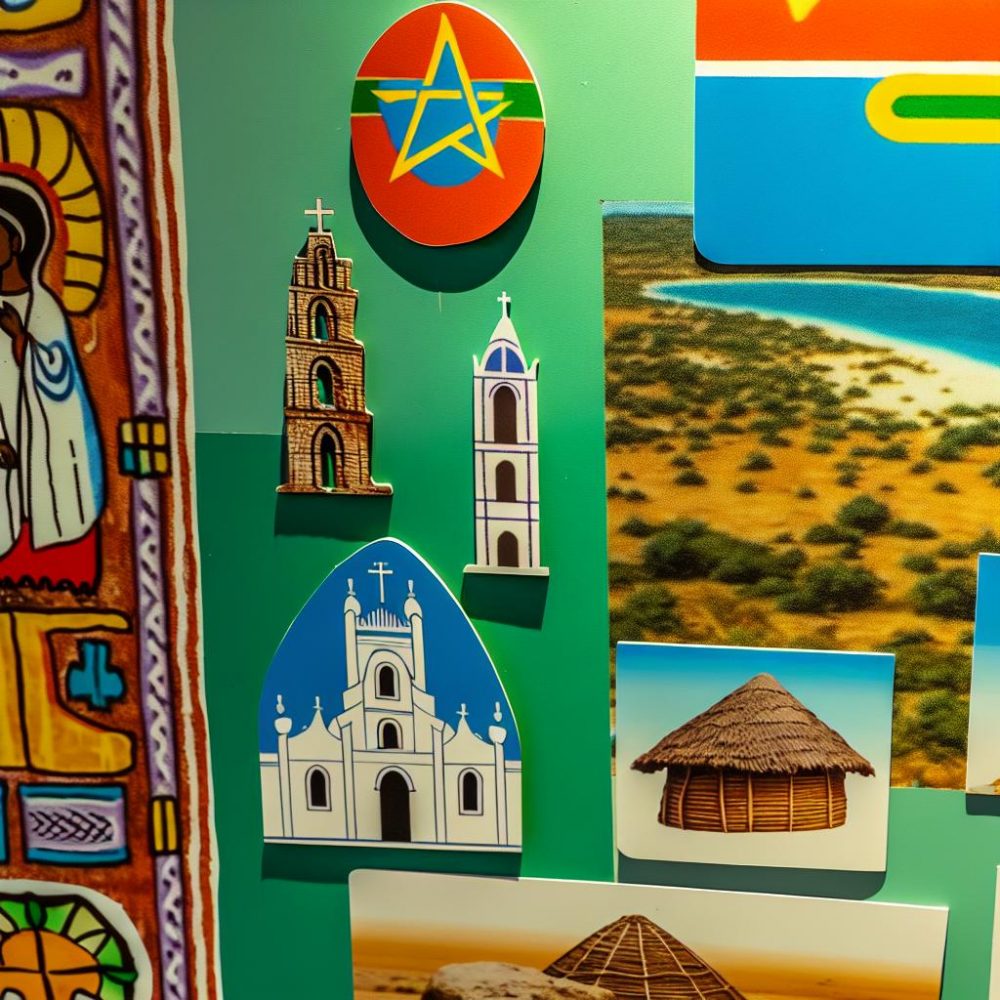
Ethiopian Empires and Their Influence on Somaliland
The historical interactions between the Ethiopian empires and the region now known as Somaliland are fascinating and characterized by complex and multifaceted dynamics. Both regions, with their unique historical trajectories, have shared long-standing geopolitical, cultural, and economic linkages that have significantly influenced their histories.
Geopolitical Dynamics
Throughout the ages, the Ethiopian empires, particularly the Aksumite Empire, which was prominent from around the 1st to the 7th century, and the Solomonic Dynasty that followed later, engaged in interactions with areas now constituting modern-day Somaliland. Their interactions were often driven by Somaliland’s strategic location along crucial trade routes. The Red Sea and the Gulf of Aden served as vital channels for commerce, acting as a bridge that connected the Middle Eastern world with the African hinterlands.
The geographical positioning of Somaliland made it a pivotal region for trade. The Ethiopian empires recognized Somaliland’s economic and strategic significance and often sought to exert influence over it. This effort was partly aimed at enhancing their own economic prosperity and increasing their political power. By controlling or influencing trade routes, the Ethiopian empires could strengthen their economic foothold in the region.
Trade and Commerce
The burgeoning trade networks were central to the relationship between the Ethiopian empires and Somaliland. With access to the sea, Somaliland became pivotal in facilitating the trade of various goods such as frankincense, myrrh, spices, and other commodities highly sought after by different cultures and civilizations. The economic significance of these goods cannot be underestimated, as they were integral to both the economic vitality of Somaliland and the interests of the Ethiopian empires.
The Ethiopian empires sought control over these trade routes not just for economic gain but also to extend their political influence. This desire for control often led to diplomatic efforts, with ties and alliances being formed to ensure the security and profitability of trade networks. Such partnerships were essential in promoting stability and ensuring that trade could flourish without the constant threat of disruption by other regional powers.
Cultural and Religious Exchange
Beyond trade, cultural and religious exchanges also played a critical role in shaping the interactions between the Ethiopian empires and Somaliland. The Ethiopian empires were among the earliest regions in Africa to embrace Christianity, with the Aksumite Empire adopting the religion in the early 4th century. This religious adoption marked the beginning of a significant cultural and ideological exchange with Somaliland.
Although Somaliland primarily followed Islam, introduced later through Arab traders and missionaries, instances of cultural exchanges between the two regions were not uncommon. These interactions were facilitated by merchants and explorers traversing trade routes, leading to a blend of ideas and cultural practices. Despite religious differences, there existed a mutual exchange of knowledge, which helped to enrich the cultural fabric of both societies.
Military Conflicts and Alliances
The historical narrative of interactions between the Ethiopian empires and Somaliland is not without military conflicts. During certain periods, Ethiopian kingdoms engaged in military campaigns aimed at exerting control or safeguarding their interests in the Horn of Africa. One of the most notable periods was during the 16th century, marked by the invasion of Ahmed Gragn, a leader determined to expand his territories and influence. This era saw religious and territorial expansion become focal points of conflict.
Despite such conflicts, there were also periods where alliances were forged between Ethiopian rulers and local leaders in Somaliland. These alliances were often based on mutual interests such as trade, security, and defense against common enemies. Diplomatically, these partnerships were essential in navigating the complex political landscapes of the time and ensuring the survival and prosperity of the involved parties.
Economic Interdependence
The economic interdependence between the Ethiopian empires and Somaliland was profound. While trade was a significant contributor to economic ties, agricultural exchanges also played a role. Ethiopian highlands were known for their agricultural production, and surplus goods would often make their way to Somaliland and beyond. Conversely, goods from the coastal regions of Somaliland, including seafood and exotic goods imported from farther lands, found their way into the Ethiopian hinterland.
The exchange of goods facilitated not only economic cooperation but also fostered deeper connections between the people of both regions. Markets, whether in bustling coastal ports or inland Ethiopian towns, became melting pots of culture, language, and commerce. The interactions that occurred in these spaces contributed to a gradual intertwining of the socioeconomic tapestries of both societies.
Political Influence and Diplomacy
Political influence and diplomacy were key components of the Ethiopian empires’ strategy in maintaining relationships with Somaliland. Diplomacy was often employed to navigate the complexities of regional power dynamics, with envoys and treaties helping to establish and maintain alliances. These diplomatic efforts were vital in ensuring that the diverse interests of both regions were respected and addressed.
Through skilled negotiation and diplomatic maneuvering, the Ethiopian empires were able to exert influence over certain aspects of Somaliland’s political landscape. In some cases, local leaders aligned themselves with Ethiopian interests to gain political leverage and security against other regional powers. Such diplomatic exchanges were crucial in maintaining peaceful relations and advancing mutual interests.
Conclusion
The role of Ethiopian empires in the region of Somaliland is an enduring reminder of the interconnected nature of African history. Through trade, conflict, cultural exchanges, and diplomacy, these interactions have left an indelible mark on the social and economic fabrics of both societies. Understanding this historical interplay offers valuable insights into the regional dynamics of the Horn of Africa and contributes significantly to the broader narrative of its past.
By examining these historical interactions, we gain a deeper appreciation for the complexity and richness of African history, recognizing that it is not only a history of individual societies but one of interaction, adaptation, and mutual influence. Exploring these connections helps illuminate the diverse and multifaceted nature of historical relationships and emphasizes the importance of looking beyond simplistic narratives to appreciate the intricate mosaic of African history.